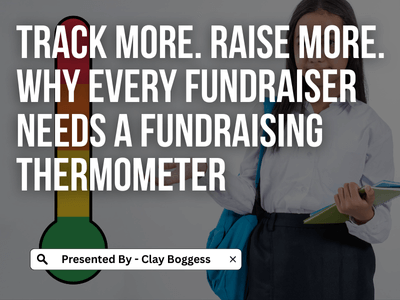
How to overcome potential school delivery hurdles.
Unless you've experienced a troublesome delivery, it's probably one of the last things on your mind. Most assume they happen. Place an order and receive it on your doorstep. But deliveries for school fundraisers are a bit more complex. Smaller orders can be straightforward, but a big elementary school can have over 5,000 items or more.
Orders arrive divided up by grade level, teacher, and finally by individual student. As you might expect, mistakes can happen. But with today's technology, companies average a 99.6% order accuracy processing rate. This is due to the use of digital product scanning during packing. Still, a 5,000-item order could have as many as 20 mistakes at this rate.
Many sponsors don't think about their delivery until closer to the end of their sale. Assuming companies do their job, why plan? Orders are scanned for accuracy before boxes get packed and sealed. Boxes then get placed on pallets and are shrink-wrapped together to help keep them secure. Every box has a student label on the outside with paperwork on the inside verifying the correct order.
If the shipper does their job, everything will happen without a hitch, right? The short answer is yes. But we know errors are inevitable, so you should plan for them.
When it comes to fundraising deliveries, there are three types of mistakes:
Wrong Items
This can happen as a result of company or buyer error. When order forms are processed, data entry people go off the item number. The product description is used as a backup. For example, if the number is not legible, the next step is to reference the description.
The next step in the process is the packer. The data entry department may do a proper entry, but the packer may pick the wrong item. 'Pick to light' systems have helped eliminate errors, but they're still possible.
Customer error can happen when the wrong number is accidentally written on the order form. Sometimes this is due to how the item number appears relative to the item in the brochure. This can be potentially misleading to the buyer.
Damaged Items
You can have a perfectly packed order, but sometimes things happen in transit. Items can shift and break. Companies know to pack heavier items on the bottom. Items also have their box to help maintain integrity.
But shippers also stack pallets to save on space. Fundraiser companies warn shippers by placing colorful labels on each pallet. "Don't stack "and "fragile" on fluorescent stickers are seen but can sometimes be ignored.
Another issue is that orders may not always stay on the same truck. When pallets are moved off one truck and onto another en route, this can also cause issues.
Missing Items
An item or even an entire student's order may be missing from an order. If a student's order is missing, it's because the order was never submitted. This is easy to determine. If the order is missing from the sales reports, it was never processed.
Now let's throw another wrench into the mix. What if you're doing a cookie dough fundraiser or another frozen food sale? These types of products require special handling not only during shipment but once the order is delivered.
As you can see, a lot can happen before and during a school shipment, even before it arrives. But with that said, there are three things you can do on your end to ensure a smooth fundraiser delivery.
1. Early School Fundraisers Have Advantages
The earlier you start your fundraiser, the better. This is not only true because your students can get to customers before others in your area either. Most fundraising companies want to avoid having excess inventory in stock.
Projecting how products will sell determines the ordering process. This cannot be easy to do. The goal is to deplete inventory at some point to make room for the following season. Companies don't want to have to reorder unless they have to. Expedited shipping costs cut into margins.
Early fall or spring sales ensure that inventory is still plentiful. This helps prevent the likelihood of having to deal with extra back-order deliveries. Substitutions happen when a particular item is no longer in stock and gets replaced. This can lead to customer complaints if items are not precisely as initially advertised.
2. Establish Effective Communication with Parents
School fundraisers aren't just about getting sales. It's also vital to ensure everyone is on the same page. Do your parents know what to expect and, most important, what to do? How well informed will they be about your delivery?
Never make assumptions. Instead, it's the sponsor's job to ensure parents understand what to do. They will need to know answers to questions like:
- What day is the delivery?
- Will delivery happen in the morning or afternoon?
- Where will they need to pick up their student's order?
- Are you going to need them to verify their orders are correct?
- How will they need to address any missing or damaged items?
Effective communication between you and your parents should be a priority. Your primary goal is to distribute as many boxes as possible on the first day of your delivery. This way, you won't have to store unclaimed boxes.
Learn how to manage post-fundraiser delivery issues
3. Delivery Volunteers are a Must
You may already have the luxury of an abundance of PTA board members willing to help. But if you don't, be sure to recruit reliable volunteers. And don't tarry. The sooner you have people in place, the better. Don't make the mistake of thinking you can handle it by yourself. Having too many volunteers is always better than not having enough.
Sorting and distributing boxes is a big job, especially for large orders. The more volunteers you recruit, the faster and easier your distribution will be.
Experiencing a smooth fundraiser delivery requires advanced planning, coordination, and execution. And not just by the company.
Author Bio
Clay Boggess has been designing fundraising programs for schools and various nonprofit organizations throughout the US since 1999. He’s helped administrators, teachers, and outside support entities such as PTAs and PTOs raise millions of dollars. Clay is an owner and partner at Big Fundraising Ideas.



